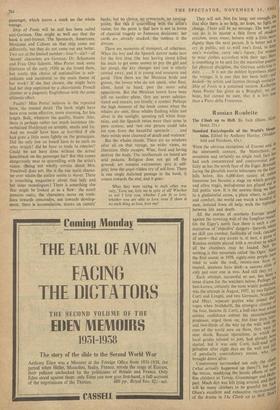Russian Roulette
WITH the obvious exceptions of Everest arid, in the nineteenth century, the Matterhorn, El° mountain and certainly no single rock face bas had such concentrated and controversial Pun' licity as has the north face of the Eiger. BrazenlY facing the ghoulish tourist telescopes on the f00l. hills below, this 6,000-foot saucer of rotte° limestone has become a stage on which ',rival!: and often tragic, melodramas arc played out full public view. It is the nearest thing we hav.' to a gladiatorial arena, a place where, iii safetY, and comfort, the world can watch a handful w men, isolated from all help, walk the tightr°0 between life and death. All the storms of northern Europe PwInfa against the towering wall of the J ungfrau mossl On the Eiger's north face there is such a el; centration of 'objective' dangers—hazards whic, no skill can combat, fusillades of rock, cascadei of snow—that any ascent is, at best, a gnatRussian roulette played with a revolver ill vv",i,54
all the chambers may be loaded. Not
nothing is this mountain called 'the Ogre.' SEEll'e the first ascent in 1938, eighty-nine people bov tried to scale the wall; twenty-one have rei
treated, nineteen have died—a success ratio °
only just over one in two. And still they try Each attempt, successful or not, has been,e tense drama for the watchers below. Perhaps E",,
best-known, certainly the most widely publicise's,
was the attempt in August, 1957, by two Italianct Corti and Longhi, and two Germans, Nothduri'r and Mayr, separate parties who joined Oleo/ ropes when Nothdurft, the strongest climber se the four, became ill. Corti, a bull-like mall wir„e animal confidence outran his mountaineer17 prudence, urged them on; but four days Iste,0 and two-thirds of the way up the wall, with all eyes of the world now on them, they were ,a_e near death. Rescue operations, in which Wert local guides refused to join, had already he.th started, but it was only Corti, half-mad privation after eight days on the wall and ,,as of peculiarly contradictory stories, who brought down alive. Controversy surrounded not only the c 'so ('what actually happened up there?), but a ch the rescue, muddying the heroic efforts of sole_ fine climbers as Terray, Gramminger and fiel re part. Much dirt was left lying around, and theck will be many climbers to be grateful for Olsen's excellent and exhaustive reconstructl_ul of the drama in The Climb up to Hell. 0°° be Put off by the Hollywood title: Mr. Olsen is objective, vivid, entirely non-partisan and, for a 110n-c1imber, wonderfully understanding of the impulses which drive men to actions which to others appear simply mad. Anyone even remotely interested in moun- tains will wish to possess Anthony Huxley's Encyclopedia. It is an impossible thing to review Without being tediously descriptive. I haven't managed to find any factual mistakes, or even any startling omissions. Here are maps, glos- saries, histories of mountaineering exploits, brief biographies of leading mountaineers, at least 300 entries describing individual mountains or ranges and some glorious colour plates—in fact, a beautiful and useful book to own. What it doesn't explain, any mote than Mr. Olsen's or anyone else's book, is why—why are mountains Sc fascinating, why do we climb them? Every- one asks the question, just as they ask, why go to the moon, or Mars? Surely the only answer to all questions of this sort is: because it might be possible.
JEREMY BROOKS







































 Previous page
Previous page